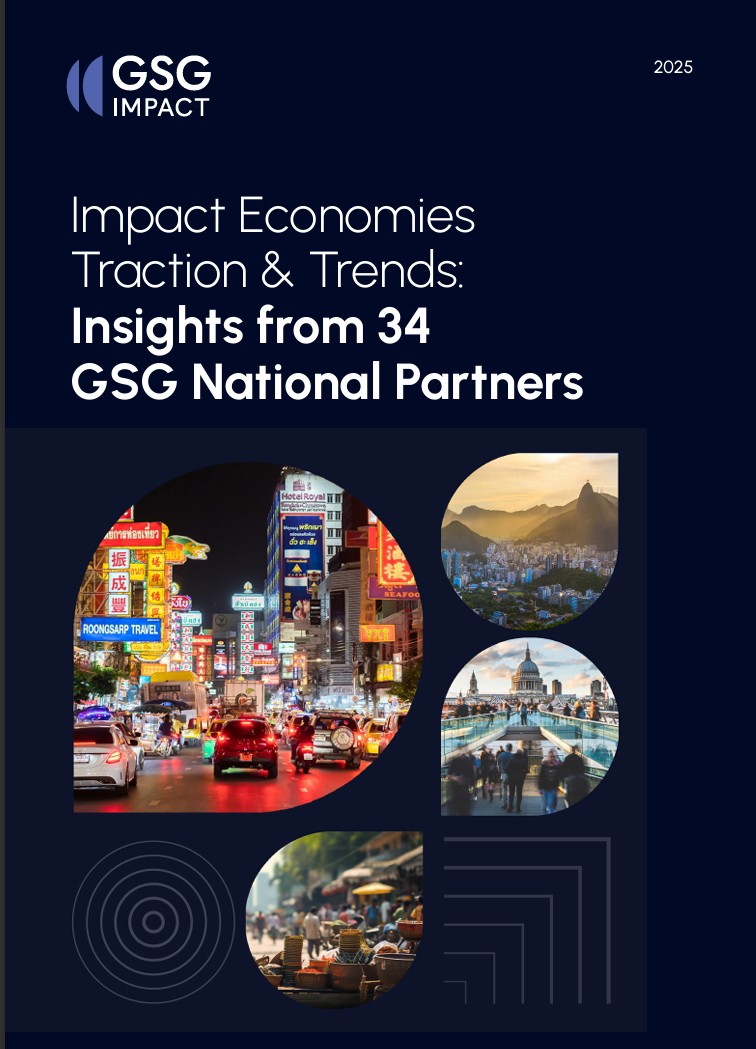
A comprehensive deep dive into the evolving global impact economy landscape, this GSG Impact report analyses trends across 34 GSG National Partners and their diverse national impact ecosystems. Discover key insights on government actions, the role of market-building groups, impact capital intermediation and supply, demand for impact capital, and contributions to the United Nations Sustainable Development Goals (SDGs).
Understanding the Global Impact Landscape
The global impact landscape is evolving at an unprecedented pace, driven by the urgent need to address climate change, social inequality, and sustainable economic development. As capital markets increasingly integrate environmental, social, and governance (ESG) factors, impact investing has transitioned from a niche practice to a mainstream investment strategy. Governments, financial institutions, and private investors are aligning their capital with measurable social and environmental outcomes, fostering a more inclusive impact economy.
Impact investing ecosystems around the world are evolving in diverse ways, shaped by unique local contexts, priorities, and capacities. Some are advancing policies and scaling capital deployment, while others are building foundational infrastructure and experimenting with innovative approaches. Country-level developments can offer practical lessons and models that are transferable across borders. By identifying what works in one ecosystem, stakeholders in another can adapt and apply strategies to accelerate the adoption of impact finance and unlock new opportunities.
Report Purpose: Fostering Shared Learning & Actionable Insights
To promote shared learning, this report provides concise descriptive profiles of 34 ecosystems, where GSG National Partners are playing a leading role in driving the transition towards an impact economy. Building on our first country-by-country overview published in 2019, Transition of Impact Economies, this edition tracks how these 34 ecosystems are evolving. Each profile presents a snapshot of the country’s impact investment ecosystem, including market size, self-assessed market maturity, and key initiatives undertaken by major stakeholders. This report is intended to inform investors, policymakers, and ecosystem builders by providing actionable insights to accelerate capital deployment and drive systemic change. It highlights how impact investing is evolving across diverse country contexts - not only in developed markets, but also in emerging and developing economies, where local and international actors are co-creating ecosystems.
Rather than ranking ecosystems or generating a scoreboard, the report aims to serve as an ecosystem learning tool and to build confidence in local actors and initiatives.
What Are the Key Trends Shaping Global Impact Economies?
Our analysis across the 34 National Partner ecosystems reveals trends and insights emerging across ecosystems. These focus on critical stakeholders, mechanisms, and vehicles shaping the global impact investment landscape:

Impact economies are becoming national strategies
Many governments are increasingly embedding impact investing into national development plans and policy agendas, signaling a shift from isolated initiatives to long-term strategic priorities.

Impact investment wholesalers are increasing the pool of domestic impact capital and strengthening market capacity
These wholesalers typically provide flexible, patient capital to intermediaries (e.g., fund managers and social lenders) and can de-risk investments for co-investors.

Governments are increasingly adopting outcome-based financing mechanisms
Outcome-based financing (OBF) mechanisms – notably Social Impact Bonds (SIBs) and Outcomes Funds - are gaining traction as governments seek to tie funding to measurable results

Green bonds and sustainability-linked bonds are becoming mainstream instruments for raising capital for environmental and social projects
Green bonds, other sustainability-themed bonds (e.g., blue bonds), and sustainability-linked bonds have become mainstream instruments to crowd-in capital into climate and social investments.

Global sustainability disclosure standards are advancing impact transparency
Ecosystems are aligning with international sustainability disclosure standards, notably the IFRS Sustainability Disclosure Standards (S1 and S2) released by the ISSB. This push for transparency aims to improve comparability of ESG and impact data, build credibility in the market, and prevent impact washing.

Institutional and retail capital are increasingly being unlocked for impact
Pension funds and other institutional capitals are powerful drivers of impact investment in each ecosystem.

State-owned development institutions are a growing catalyst for impact investment in emerging and domestic markets.
Development finance institutions (DFIs) and international development agencies are one of the main impact capital suppliers in both emerging and domestic markets.

Investment readiness programmes are key to strengthening impact demand
Across ecosystems, there is significant emphasis on accelerators, incubators, technical assistance, and other capacity-building programmes to grow the pipeline of viable impact projects.
Report Scope: Featured Country Profiles
This report includes detailed profiles for the following 34 countries, where GSG National Partners are actively building impact economies:
Africa
-
Ghana
-
Kenya
-
Nigeria
-
South Africa
-
Zambia
Asia Pacific
-
Australia
-
Bangladesh
-
India
-
Japan
-
Malaysia
-
New Zealand
-
South Korea
-
Sri Lanka
-
Thailand
Europe
-
Belgium
-
France
-
Germany
-
Greece
-
Israel
-
Italy
-
Netherlands
-
Norway
-
Portugal
-
Spain
-
Türkiye
-
United Kingdom
Latin America
-
Brazil
-
Central America
-
Chile
-
Colombia
-
Mexico
-
Peru
North America
-
Canada
-
United States









